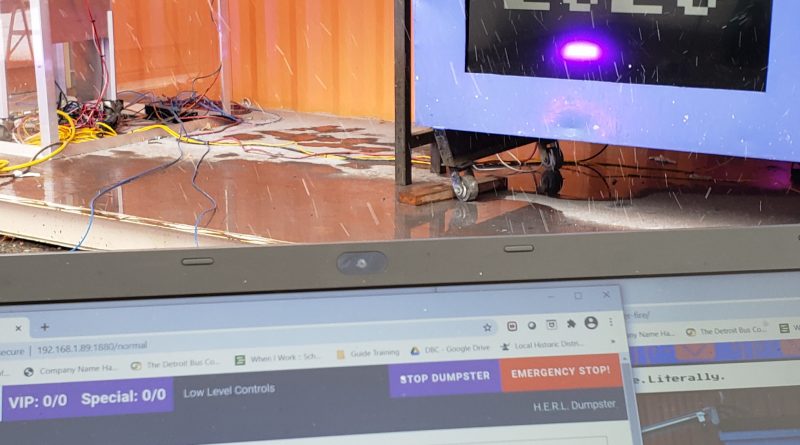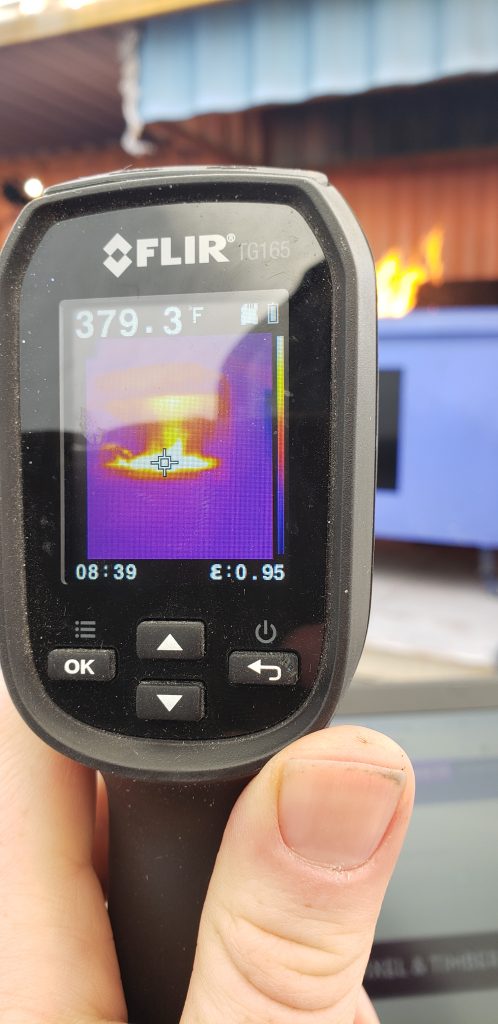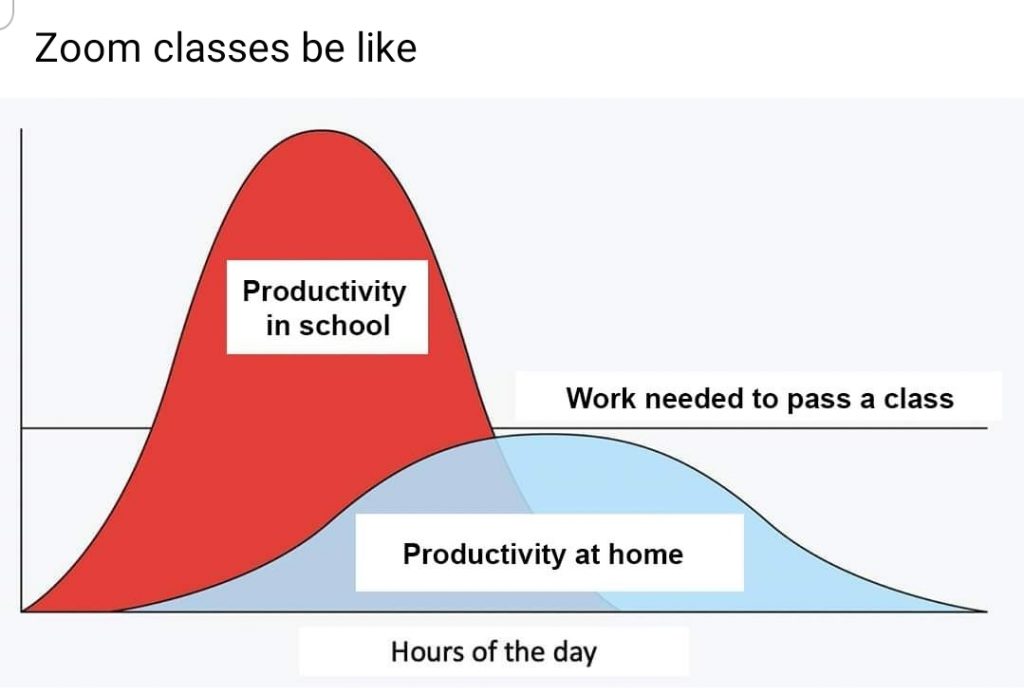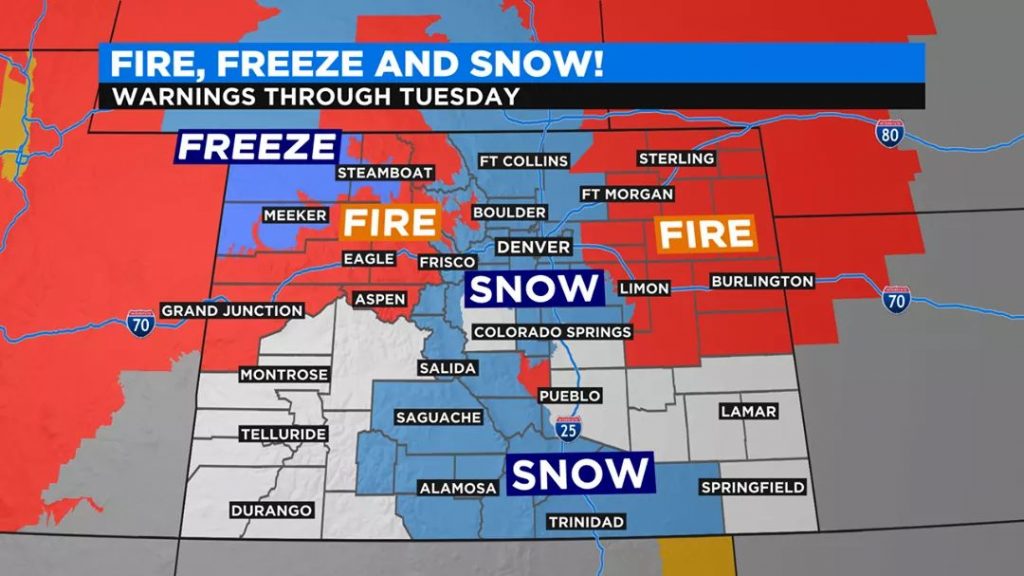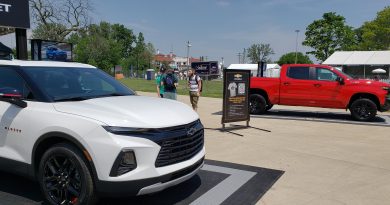Unto The Flame: Managing A Literal Dumpster Fire
I spent parts of the past few weeks at the Detroit Bus Company moderating the emails sent in to a literal dumpster fire. The project is a marketing slash public art project associated with Hey Email and Basecamp, a software company that developed the email platform. The principal was simple: Give people the opportunity to send off the metaphorical dumpster fire of the year that was 2020 into a literal dumpster fire. The e-mails got printed out, carried up a ramp, and deposited into the flame (usually). It was an opportunity for me to detox from my last full-time quarter in school, enjoy some quality time in my shiny new Marmot Avant jacket that I got on closeout from Campsaver, and, well, help people purge 2020 from their minds in a conflagration. Neither rain, nor snow, nor blown ash of printed e-mail shall stay this courier from his appointed rounds!
Anatomy of a Dumpster Fire
The genesis of the project is a bit unclear. I got involved after doing some Matterporting for Detroit Bus Company’s Andy Didorosi, progenitor of the e-mail project and the Arsenal of Clean, which, he says, is Detroit’s only manufactory of hand sanitizer. I had originally proposed live-tweeting a “best of” from my personal Twitter account, but this idea was brushed off by the Powers That Be. In my studies of The Business, I’m not entirely sure what the point is of a marketing project if not to reach as many people as possible. But ultimately it was interesting to see where the winds of Al Gore’s internet took the platform without more concerted promotion. Today, coder bros in the Midwest! Tomorrow, marketing agencies in Denmark or Finland!
The machine itself is self-contained within a standard shipping container. The front is cut out and lined with welded tubular steel bars, and the thing is covered up with a giant tarp when not in use. Facing the container, a dumpster sits on the right side, while the printer and its plexiglas enclosure sit on the left side. An industrial conveyor belt carries the paper deposited from the printer up the ramp and then shepherds it into the flames, which are automatically ignited when the sequence of the ramp movement triggers a solenoid on the gas line. It’s quite clever. Cut into the front of the dumpster is an opening through which a TV displays the text ‘2020’– or, on our last day, looping footage of sea creatures frolicking in high definition, because why not. LED lights illume the scene. The whole thing is streamed live and captured in HD. The fire part of it even comes with a triple carbon offset from its progenitors. I mean, whatever that means.
The Catharsis of the Flame
As a confessed media junkie– media theory is probably top on my list of “stuff I’d get a PhD for if not economic geography”- I always find it so interesting to track what’s going on with The Discourse. I’m high-key obsessed with language and how it evolves, and I’m equally interested in thinking about what people are saying. 2020 provided no shortage of glorious and hideous discourse. The Dumpsterfire specifically invited a mixture of people who found the project amusing, hilarious, didn’t believe it at all, or didn’t have the faintest clue what to do with it.
While I started out fielding a lot of largely unintelligible tech bro rambling (to the effect of “my devops team is better than ur devops team lololol”), I quickly fell into a routine to sort through and approve messages of interest or skip uninteresting or excessively profane ones. Some were playful in their hopefulness (“I hope this is the final level of Jumanji!”) while others sought catharsis from 2020’s seemingly perpetual deluge of tragedies, some of which were often personal (“my wife is 37 and was just diagnosed with terminal brain cancer,” or “my mom died of COVID and then my dog died of cancer, fuck this fucking year”).
One particularly memorable message made light of the year in a somewhat macabre brilliance, through a distinctly niche reference to poetic translation of a message sent back to earth by the Opportunity Rover, saying only: “[2018-06-10] My battery is low and it is getting dark.” Frowny face.
2020, The Year Of Fuck Trump and Fuck COVID
Politics was, unsurprisingly, a quite common theme. One right-winger with unrepentantly bad spelling ranted about “Nanci Paloski” [sic] and “vegan burgers” and “Tesla,” while one repeat spammer sent dozens of Facebook screenshots of rabidly pro-Trump conspiracy theorists talking about QAnon and George Soros and the Deep State. In an ultimate twist of postmodernism, it was sometimes impossible to tell whether people were trying to burn in effigy the name or visage of the person mentioned, or whether they were trying to somehow promote that person in celebratory flame. A picture of Trump’s sneering visage was fairly unambiguous. Somewhat unclear were the likes of enigmatically terse statements, like “TRUMP 2020” or just “TRUMP” without commentary. One message superimposed the golden spiral onto the hindquarters of the departing US president playing tennis in a now-infamous, particularly unflattering image of his backside, clad in billowing, white shorts. I would say that the anti-Trump outnumbered the anti-Biden about ten to one.
Most of the Biden images were of him sniffing women. These were sometimes real photos but were often poorly photoshopped.
Some messages were actually written out and sincere in various states of hopefulness and exhaustion. “This whole year I haven’t been able to join my friends at the pub,” one Briton lamented. “Hopefully 2020 will bring more friends and more beer.” Teenagers lamented heartbreak and homework (“RIP MY GPA,” “I fucking hate Ms. Roberts’ algebra class,” or rambling, angsty juvenile missives about epic love). Parents, meanwhile, feared for the future of their children (“My kid doesn’t understand what it’s like to play with other kids”). Trans women, men, and nonbinary senders pleaded for acceptance from their estranged, homophobic family, or, variously, praised their partners or paramours for their acceptance and love. People pleaded for racial justice and awareness of issues of racial justice,
Toward a global and delightfully bizarre discourse
Mostly, though, people didn’t write per se. They spoke in the new global language of memes, starting with what I might call “stock” content. Neither meme, animal, vegetable, nor mineral. There were a few that utterly baffled me– “The Entire Script From The Bee Movie” I got a few dozen times, and I still don’t understand why. Another popular one was some line that apparently originated from TikTok about how “I ain’t never seen two pretty best friends, there’s always an ugly one”).
There were plenty of screencaps of Rick Astley dancing, or just the lyrics to his song. While the concept of Rickrolling is as delightfully saturated with postmodern weirdness, as a tres leches cake is with condensed milk, the practice loses its effect when the recipient clearly sees what you are trying to accomplish. Following my first day, when I rubber-stamped most entries, I wholeheartedly embraced Andy’s dictum to “use extreme prejudice” when approving messages. We did, after all, have 18,000 messages to get through.
…with or without a common spoken or written tongue
Evidenced in the universal language of memes, perhaps the most singular cultural quality of Dumpsterfire was its cosmopolitanism. This was best exemplified in the dozens of languages I came across in submissions. All told, I fielded messages in English, Spanish, Danish, Dutch, Swedish, Norwegian, Finnish, Hungarian, Catalan, Turkish, Estonian, Arabic, Persian, Japanese, Tagalog, Chinese, Czech, Slovak, Polish, Macedonian, Russian, Ukrainian, Croatian, Greek, Italian, French, Portuguese. Once I came across a language that I didn’t recognize that Google Translate didn’t recognize, either. This kind of thing makes me giddy. Leave me alone, I’m a nerd.
Truth be told, I’m pretty good at languages. It’s one of the few things that I both genuinely enjoy and can also relate to at this sort of deeper, cosmic or spiritual level. Trying to speak a foreign language is sort of like trying an exotic new pastry. You think about its social and economic context a bit, but the most exciting part is feeling it on your tongue– how it’s different from the other thing you tried before, the chemical composition of it, the taste, the feel. The mouth is a weird fucking organ like that– used in the pursuit of, well, communication, nutrition, intimacy, tactile exploration, and sexual pleasure, and quite vitally to all five.
Languages are sort of like a puzzle. If you speak one, it fills in a bunch of missing pieces on the board for the next one. As a roughly-fluent German speaker, I can often figure out the gist of Germanic languages. This includes Dutch, Danish & Swedish, and, to a lesser degree, Norwegian. Icelandic has some words that have traceable Germanic roots, but, beyond that, it is quite mysterious.
I can look at the Dutch “Koninklijke Nederlandse Hoogovens en Staalfabrieken” and translate it without thinking about it to the nearly identical German, “königliche niederländische Hochöfen und Stahlfabrik,” or, in English, “Royal Dutch Blast Furnaces And Steel Mills.” Hoogovens -> Hochofens -> High Ovens -> Blast furnace. I eat this stuff up. Romance-wise, I can muddle my way through Spanish as well as a bit of Portuguese, Catalan, French, and Italian.
Twitch, TikTok, YouTube: The Gamers Arrive
So, back to the fire: While I don’t actually speak a word of Portuguese, I can understand what I’m reading when I see phrases like, “GOULARTE me enviou aqui!” (“GOULARTE sent me here!”) or, “quem está lendo isso é GAY” (“whoever reading this is gay”). Both of these phrases are close enough to Spanish for me to understand. Goularte is, I surmised, some gamer channel. In a profoundly ironic twist of the global phenomenon of teenage insecurity around sexuality, American teenagers seem equally convinced that the reader is gay (often appended, in English or Portuguese, with something to the effect of “lolololol” or “hi mom”). Weirder still was the fact that Brazilian teenagers seem just as obsessed with Japan and anime as their American counterparts (“親日,” or shinnichi, the Japanese call this), evidenced by usernames, the mishmash of language, and imagery.
If I couldn’t figure something out, I’d turn to Google Translate. It was a lifesaver, though translations were sometimes approximated (“I hate this year and everything that involves it!”) and other times downright hilarious (“CORONA WILL FUCK”).
I also greatly enjoyed attempting to decipher non-Romance languages. I can read some Cyrillic, but I don’t speak any Slavic languages. I can usually tell Polish from Czech or Slovak, and sometimes Czech or Slovak from Croatian. The diacritical marks are often telltale signs, as are, for example, Polish’s preponderance of weird consonant combinations that don’t make sense to Anglo-Romance brain. If I’m majorly on my game, I can sometimes tell Russian from something more exotic like Macedonian or Bulgarian, both also written in Cyrillic script.
If only going by the content of the messages, one might even be able to tell whether they were from. One user wrote: “боль, грусть, зависимость, обида, одиночество” (“bol’, grust’, zavisimost’, obida, odinochestvo”), which Google tells me is Russian for “pain, sadness, addiction, resentment, loneliness.”
Global Memery, the New Esperanto?
Indecipherable memes were perhaps a far more common thread than decipherable languages. Brazilians were particularly fond of a few memes, none of which I “got” because they were usually shared with no text. There was a quite popular one of this chummy, rotund guy with a severely receding hairline and sunglasses in an orange shirt, sometimes grinning and giving a thumbs-up and sometimes sitting in a car. I have no idea what he is up to. There was another one of a young black kid in a tank top with a toothy grin and bleached-blonde hair. (Wilder still was coming across this article that referred to uniquely Brazilian memes, none of which I saw in my tens of thousands of e-mails. Things change fast!).
And then were, of course, the images. There were a lot of “QUIEME ESTE PAPEL COMO BOLSONARO” (“burn this paper like Bolsonaro”)– probably a couple hundred Bolsonaro hate-outs in all- as well as a few of former president Dilma Rousseff. Bolsonaro was also, variously, photoshopped– unflatteringly onto a woman’s body or, pictured with a surgical mask in a particularly awkward position. Early on, I adopted a strict policy of skipping any messages that were overtly or indirectly misogynistic, alluding to domestic violence, or transphobic, etc. I tolerated ones that were perhaps angry over lost love but not misogynistic. The weirder and more context-free, the better: “SHE’S FROM THE YONKERS AND I HATE HER,” one e-mailer wrote.
Not all quite so illustrious.
A few dick pics. Waluigi porn. No racist or antisemitic jokes, surprisingly, of all of the actually and ostensibly-but-really-not-humorous entries. But certainly a few racist and antisemitic rants and slurs. A surprising number of images of Nicholas Cage. Several images of Nicholas Cage photoshopped and captioned in various ways. One guy who sent, no lie, a dozen consecutive emails with pictures of Hitler (endorsement? or a “please burn fascism”? we will never know). And some just completely weird and without context: A picture of a strawberry shaped like– and the same size as- an elephant (???) with some text in maybe Arabic or Farsi. Bizarrely, I got the elephant image twice– later with a Portuguese caption.
And, of course, a lot of people just saying, “is this real?” or “test.” Many of these did not get burned. Now you know for next time around. As the keeper of the fire and the mystic scrolls, etc., you have to appease me with a half-decent sense of humor or a worthwhile commentary on anything. Or maybe just something that is pleasantly ridiculously. We needed that to send off 2020. Especially as we wind down the tremendous shitshow that has been the Trump Presidency, we should at least be glad that we got some good humor out of the deal. And, I should hope, a semblance of self-awareness with a country that faced perhaps its most existential threat in a century.
It’s unclear what the Hey E-mail Research Lab will come up with next– probably not another dumpster fire, but who knows? I did, however, see a half-assembled [REDACTED] on the floor of the top secret laboratory on my last trip there.
You will just have to stay tuned, I guess.
Buy some Detroit-made hand sanitizer from the Arsenal of Clean here. Check out Hey E-mail here. And, of course, the Detroit Bus Company.

